Key takeaways
- Understanding US Republican campaigns involves connecting with grassroots supporters through shared values and an emotional appeal.
- Identifying potential donors requires looking at past contributions, local leaders, and analyzing voting histories for engaged individuals.
- Researching donor interests helps tailor outreach messages, making them more personal and effective, which builds lasting relationships.
- Effective communication channels vary; a mix of personalized emails, social media, and in-person meetings enhances donor engagement.
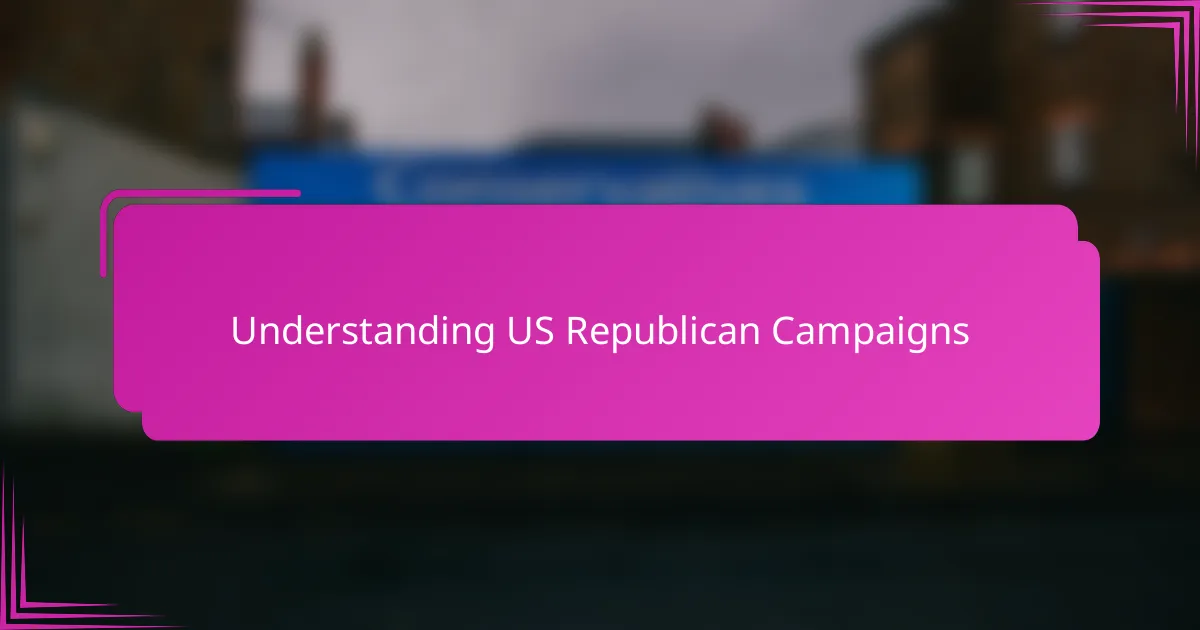
Understanding US Republican Campaigns
When I first got involved, I quickly realized that understanding US Republican campaigns requires more than just following the news. These campaigns are rooted deeply in conservative values, focusing on limited government, strong national defense, and individual freedoms. Have you ever wondered how these principles shape the messages candidates choose to share with voters?
From my experience, Republican campaigns often mobilize passionate grassroots supporters who feel personally connected to the candidate’s vision. This emotional connection is crucial; it’s not just about policies but about inspiring confidence and a shared sense of purpose. I found that recognizing this dynamic helped me tailor my outreach in a way that resonated on a more personal level.
It’s also interesting to see how fundraising efforts mirror these values, emphasizing transparency, loyalty, and accountability. This isn’t just dollars and cents—it’s about building a community of donors who genuinely believe in the cause. I kept asking myself, how can I communicate that shared commitment authentically? That question guided every interaction I had with potential supporters.
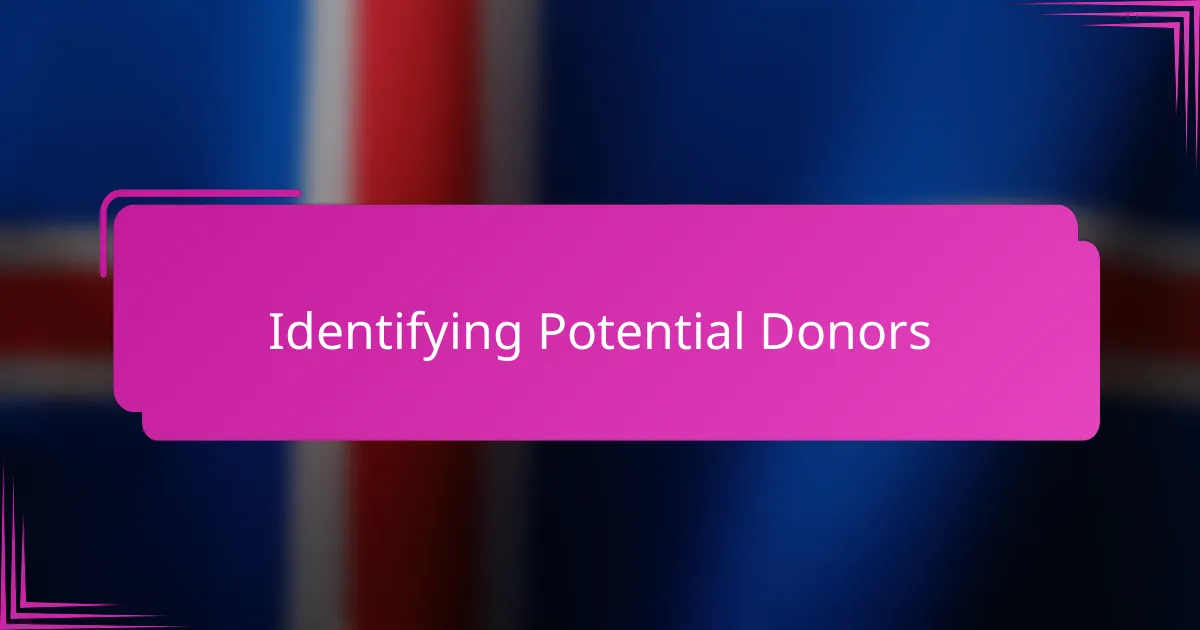
Identifying Potential Donors
Finding the right people to support a campaign is like searching for kindred spirits who truly believe in the cause. I started by looking at individuals who had previously contributed to similar conservative initiatives or who actively engaged in community events tied to Republican values. That initial step felt like tuning into a network of shared beliefs rather than just ticking off names on a list.
I also paid close attention to local leaders and activists who often serve as informal opinion makers within their circles. Reaching out to their supporters felt natural because they already trusted those voices. Have you ever noticed how recommendations from someone you respect can make a huge difference? That trust factor was something I leaned on heavily.
Another strategy I used was analyzing voting histories and participation in party activities to identify consistently engaged individuals. It was fascinating how this data pointed me toward passionate supporters who weren’t always visible but were ready to step up when called. Understanding this helped me prioritize quality connections over quantity, which proved far more effective.
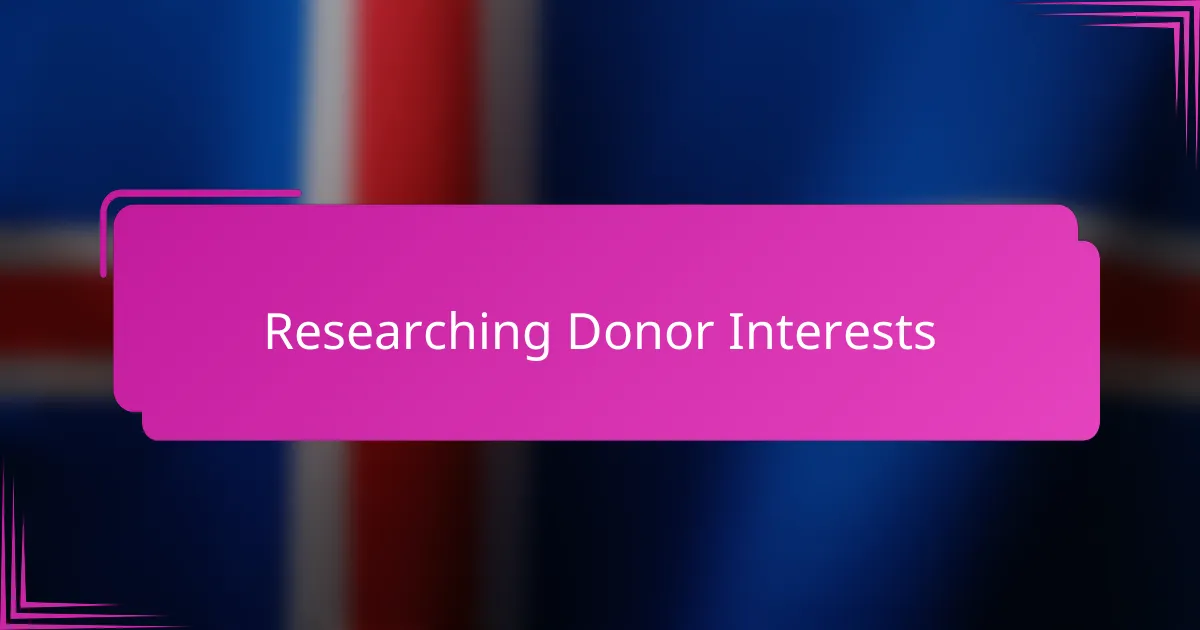
Researching Donor Interests
Digging into donor interests felt like uncovering pieces of a puzzle that would bring the campaign closer to the people it aimed to serve. I often asked myself, what truly motivates someone to reach into their wallet for a cause? Tracking their past donations and public endorsements gave me clues, but what really stood out were the personal stories and issues they cared about deeply—whether it was education reform, Second Amendment rights, or economic freedom.
I remember a moment when I discovered a potential donor’s passion for veterans’ affairs through their social media and community involvement. That insight shifted my approach entirely. Instead of a generic ask, I tailored a message that connected the campaign’s defense policies to their heartfelt values. It felt more genuine and, frankly, more successful.
Isn’t it fascinating how a little research can change the entire tone of a conversation? I realized that taking the time to understand donor interests wasn’t just strategic—it was respectful. It showed that I valued them as individuals, not just dollar signs, and that made all the difference when building lasting support.
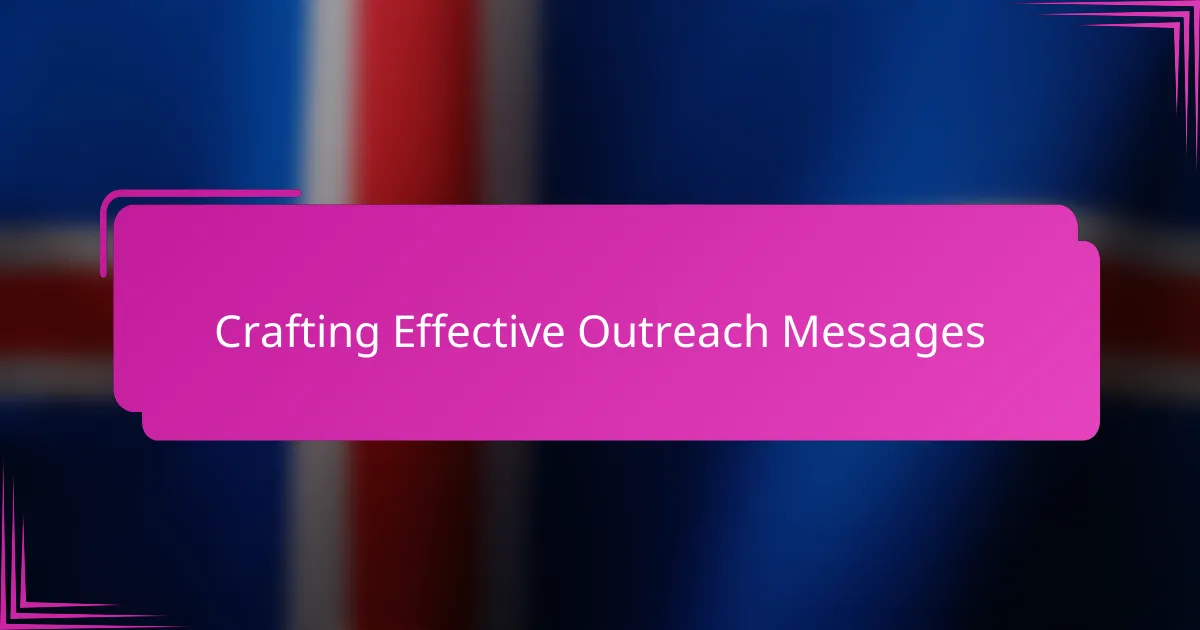
Crafting Effective Outreach Messages
Crafting outreach messages that truly resonate isn’t just about listing accomplishments or policy points. I found that starting with a clear, compelling reason why the campaign matters to the donor personally makes a huge difference. Have you ever received a message that felt so generic it was easy to ignore? That was my cue to rethink how I framed every word.
I remember spending hours tweaking a single email to make sure it spoke directly to a donor’s values—whether it was their commitment to family, faith, or freedom. This wasn’t about being overly formal; it was about sounding authentic and approachable. After all, don’t we all respond better when we feel like someone is genuinely reaching out rather than just asking for money?
Sometimes, it helped to include a brief story or anecdote about the candidate’s journey or a recent campaign win. These small touches created a sense of connection and trust that numbers alone couldn’t build. It made me realize that effective outreach is as much about emotion as it is about information.
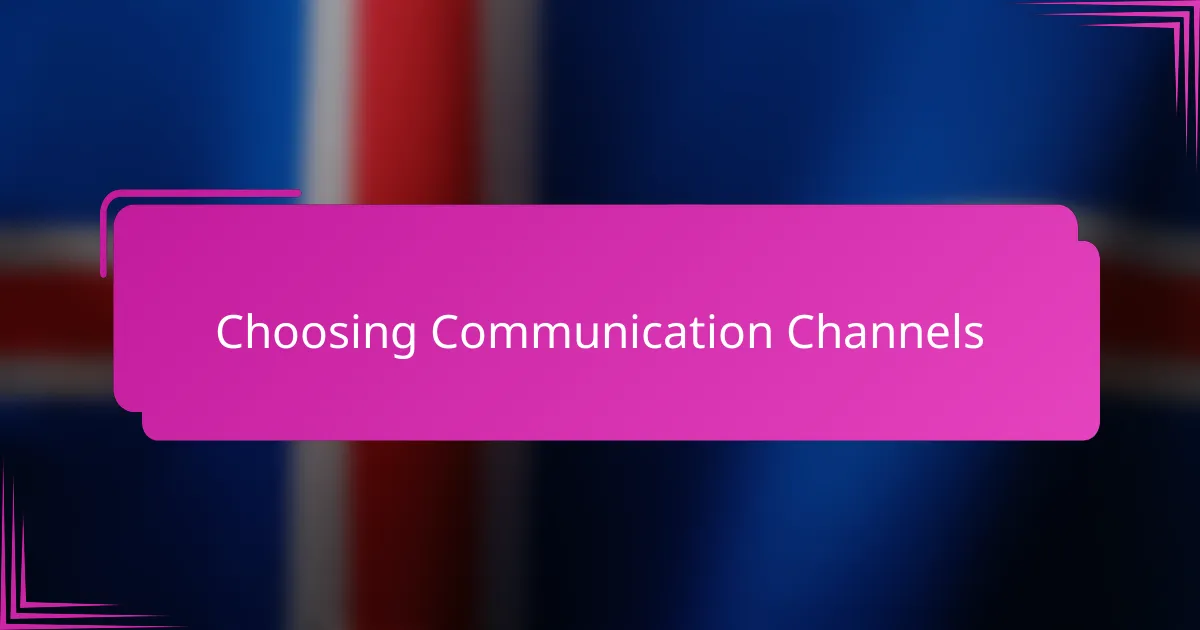
Choosing Communication Channels
Choosing how to communicate with potential donors felt like figuring out the best way to have a genuine conversation. I quickly learned that no single channel works for everyone—some prefer personalized emails, others respond better to phone calls or even text messages. Have you ever noticed how a quick, well-timed phone call can cut through the clutter in a way that an email sometimes can’t? That insight shaped how I prioritized my outreach.
From my experience, social media platforms also offered unique opportunities to engage supporters informally and share timely updates. But I had to remind myself that unlike traditional channels, social media required a different tone—more conversational, less formal—which wasn’t always easy to master. Did I always get it right? Not at first, but adapting my approach made a big difference in building rapport.
At the same time, I didn’t ignore grassroots events and in-person meetings. There’s something irreplaceable about looking someone in the eye and hearing their story—that face-to-face connection added a layer of trust that digital channels often miss. Balancing these methods felt like juggling, but it was worth it when I saw donors respond with enthusiasm and renewed commitment.
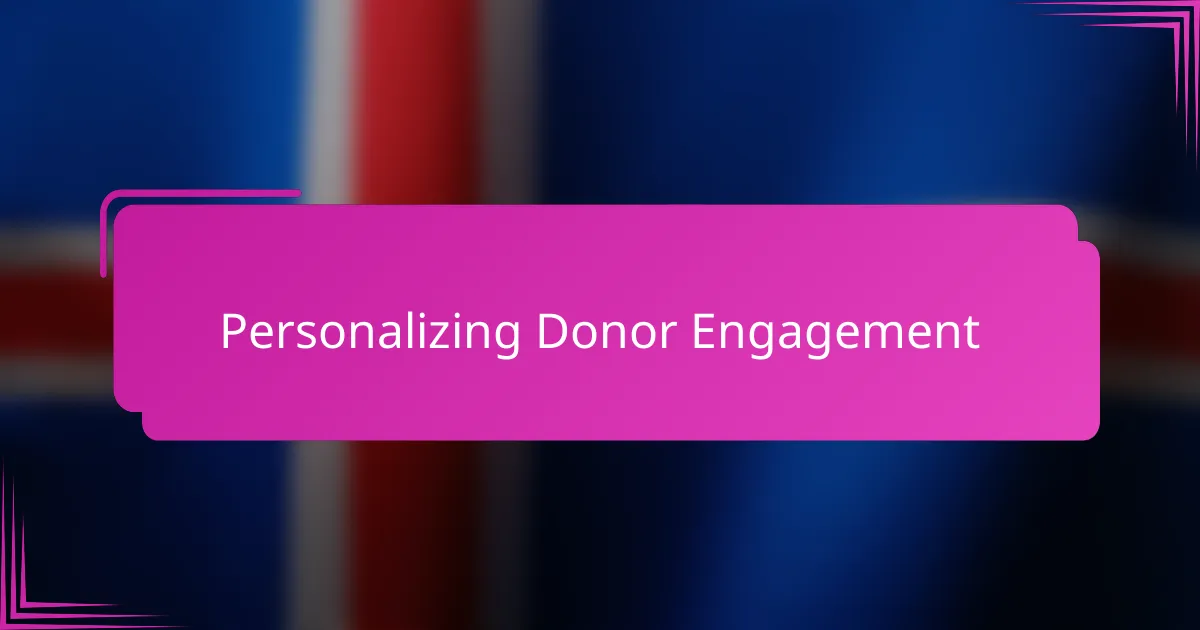
Personalizing Donor Engagement
Personalizing donor engagement felt like uncovering a unique story behind every name on my list. I remember reaching out to a long-time supporter who valued faith-based family initiatives; tailoring my message to reflect that passion sparked a meaningful conversation rather than just a transaction. Isn’t it more rewarding when donors feel seen as individuals, not just numbers?
I often asked myself, how could I make each interaction feel less scripted and more like a genuine exchange? Sharing a candidate’s personal journey or acknowledging a donor’s previous commitments created a bridge of trust. From my experience, these small personal touches transformed cold calls into warm connections.
It also became clear that listening was just as important as talking. When I took the time to respond to donors’ feedback and adjust my approach accordingly, I noticed their enthusiasm deepen. Have you ever felt more motivated to support a cause simply because you were truly heard? That mutual respect was the cornerstone of every lasting donor relationship I built.